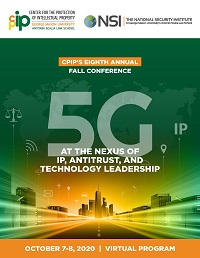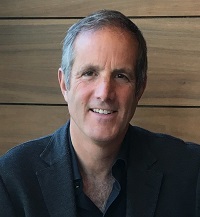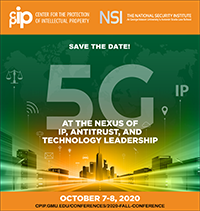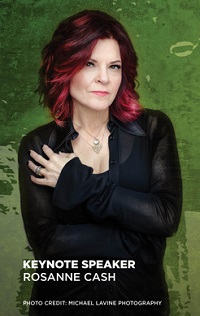Led by Prof. Adam Mossoff and C-IP2 Senior Fellow and Senior Scholar Prof. Jonathan M. Barnett, twenty-five law professors, economists, and former United States Government officials—including C-IP2 Advisory Board members the Honorable Andrei Iancu, the Honorable David J. Kappos, the Honorable Paul Michel, and the Honorable Randall R. Rader; Faculty Director Prof. Sean M. O’Connor; Senior Scholar Prof. Kristen Osenga; and Scholar Dr. Bowman Heiden—submitted a letter in response to a “call for evidence” on the licensing, litigation, and remedies of standard-essential patents (SEPs). The response discusses core functions of SEPs in the wireless ecosystem, the lack of evidence of Patent Holdup and Royalty Stacking, assumptions about SEPs and Market Power, the importance of the potential for injunctive relief even for FRAND, levels of licensing, and SEP licensing in SME markets. The letter is available here on SSRN.
Tag: Andrei Iancu
 Issue
Issue
The United States and other wealthy nations have access to plenty of COVID-19 vaccine doses and thus are beginning to get the pandemic under control, while less affluent countries do not have access to adequate doses and are still struggling with rising cases. In October 2020, India and South Africa proposed addressing this problem by waiving certain portions of the TRIPS Agreement, the most comprehensive agreement on intellectual property (IP) aspects of international trade among the WTO’s 164 member states. The waiver cites “an urgent call for global solidarity, and the unhindered global sharing of technology and know-how in order that rapid responses for the handling of COVID-19 can be put in place on a real time basis.” While this proposal broadly applies to any COVID-19-related technology, much of the conversation is currently focused on vaccines.
The proposal would temporarily suspend patent rights covering COVID-19 vaccines and possibly also be used to compel the transfer of trade secret “know-how” and “show-how.” Proponents say this would allow any manufacturer to begin production—boosting vaccine supply while slashing prices—to end the surge of cases in less developed nations. Critics argue that the reality is more complicated: the waiver will be ineffective, even harmful, and it would have a devastating impact on our readiness for future health crises.
In Support of the Waiver
For supporters of the waiver, the answer is clear: cases are rising in many nations because they still don’t have the vaccines they need. It’s only reasonable to make exceptions to our ordinary system of business incentives during times of global crisis.
The Biden Administration
That is essentially what U.S. Trade Representative Katherine Tai stated when the Biden Administration announced its support for the waiver: “This is a global health crisis, and the extraordinary circumstances of the COVID-19 pandemic call for extraordinary measures. The Administration believes strongly in intellectual property protections, but in service of ending this pandemic, supports the waiver of those protections for COVID-19 vaccines.”
It affects all of us
WHO Director-General Dr. Tedros Adhanom Ghebreyesus says that the “me-first approach” among powerful nations “is self-defeating and will lead to a protracted recovery with trade and travel continuing to suffer.” Under this rationale, even purely self-interested parties should support the waiver, if only because modern commerce is so globally connected.
Dropping IP barriers will facilitate greater collaboration
Many say the threat of IP litigation prevents the kind of collaboration needed to quickly ramp up production and development, and that a waiver can remove that threat. The president of Médecins Sans Frontières, Dr. Christos Christou, says that “[t]he waiver proposal offers all governments opportunities to take action for better collaboration in development, production and supply of COVID medical tools without being restricted by private industry’s interests and actions, and crucially would give governments all available tools to ensure global access.”
Patents were not meant to impede emergency action
A recent editorial in the journal Nature argues that patents are designed to protect ordinary commercial interests, not to hinder global cooperation against a common threat: “A pandemic is not a competition between companies, but a race between humanity and a virus. Instead of competing, countries and companies need to do all they can to cooperate to bring the pandemic to an end.”
It solves an immediate need without setting a troubling precedent
While opponents of the waiver argue that it will weaken future drug patent protection, Imron Aly and Ahmed M.T. Riaz of Schiff Hardin LLP call those concerns “unfounded” in their post at IPWatchdog. Not only is the current proposal limited specifically to COVID-19, but it was also not created carelessly. Instead, it “has taken substantial international efforts and official international law amendments.” Aly and Riaz say this exceptional action is appropriate if it can succeed where our IP system has yet to do so: “The TRIPS waiver simply allows countries the option to suspend patent enforcement to encourage COVID-19 vaccine production, which makes sense for those countries where current investment has not resulted in vaccine access.”
Even if the waiver doesn’t work, it might work
University of Houston Law Center Professor Sapna Kumar acknowledges a number of functional issues with the waiver approach but notes that it may still have a positive effect on the pandemic: “Overall, the greatest benefit of the Biden Administration’s support for the waiver is that it signals a departure from the prior approach of punishing countries facing health crises and that it might spur pharmaceutical companies to voluntarily increase out-licensing and donations of vaccines.” Her prediction was borne out by a recent pledge to donate 2.3 billion doses by Pfizer/BioNTech, Johnson & Johnson, and Moderna.
Opposed to the Waiver
Opponents of the waiver argue that it will not be effective because it fails to address the real problems. Further, it could actually be detrimental to quality control and supply chains in the present crisis, while quite possibly affecting how pharmaceutical companies choose to allocate investment dollars in the future.
It’s a long process that requires much more than a temporary waiver of licenses
Vaccines are not like other drugs. Writing for Foreign Affairs, Peter J. Hotez, Maria Elena Bottazzi, and Prashant Yadav say that we can’t compare the current situation to similar actions on HIV treatments, and that most nations are not prepared to make use of the patented technology: “Producing vaccines—particularly those as technologically complex as the messenger RNA (mRNA) inoculations against COVID-19—requires not only patents but an entire infrastructure that cannot be transferred overnight.” The authors state that “[t]he effective transfer of such complex technology requires a receiving ecosystem that can take years, sometimes decades, to build.”
We need another way
Professor Yogesh Pai of the National Law University Delhi says that simply waiving trade secret protection won’t automatically disclose everything a manufacturer needs to know. Accessing “hard tacit knowledge of manufacturing/quality control measures for production and clinical data required for regulatory clearances” could require forced technology transfer (FTT) by national governments. He recalls how detrimental such efforts were to India’s economy when it tried FTT with Coca-Cola in the 1970s, prompting the company to leave the country altogether.
Prof. Pai instead recommends efforts to encourage voluntary cooperation: “Where blunt legal instruments don’t work, using track-1 and track-2 diplomacy to place moral coercion on western governments to nudge firms to actively engage in technology licensing may still work wonders.”
“China First” policy?
Sixteen U.S. senators issued a sharply worded letter to the executive branch, questioning the true motives of “China and other countries which regularly steal American intellectual property—like India and South Africa,” and expressing shock that an American president would go along with it: “These nations are falsely claiming that granting such a waiver would speed the development of new vaccine capacity. Nothing could be further from the truth.” Instead, the senators are suggesting that the waiver is being used as a means to unfairly to acquire trade secrets that took massive resources and time to develop.
Reuters reports that “some U.S. officials fear the move would allow China to leapfrog years of research and erode the U.S. advantage in biopharmaceuticals” and quotes a senior U.S. official as saying that the country “‘would want to examine the effect of a waiver on China and Russia before it went into effect to ensure that it’s fit for purpose.’”
IP is not the Issue
A waiver on patent rights, even with the corresponding trade secrets, can only give permission to manufacture. But Eva Bishwal of Fidus Law Chambers writes that the real problems in India “are state inaction, dearth of raw materials and low production capacity.”
According to Patrick Kilbride of the U.S. Chamber of Commerce’s Global Innovation Policy Center, and as cited in Pharmaceutical Technology, “[p]roposals to waive intellectual property rights are misguided and a distraction from the real work of reinforcing supply chains and assisting countries to procure, distribute and administer vaccines to billions of the world’s citizens.”
Low-quality vaccines could do more harm than good
Former USPTO Director Andrei Iancu voiced concern recently at a World IP Day event, asking, “if we waive IP rights, and exclude the original manufacturers, how are we going to control the quality of the vaccines that go into people’s arms? How are we going to control for the fake vaccines? Just last week we saw fake Pfizer vaccines.” And as Philip Thompson points out for IPWatchdog, when investigators are forced to “determine if adverse events or sub-par effectiveness originate from ‘real’ vaccines or fake doses, we should expect global production starts and stops to become much more frequent.”
It will discourage investment in the most critical areas
Pharmaceutical developers invest unfathomable amounts of money into bringing drugs to market. The path to success is long, expensive, and highly uncertain. But what is certain is that successful drugs can yield a profit that covers the loss from failures. Now critics are deeply worried that this waiver will skew future cost-benefit analyses against important classes of medicine. All other things being equal, a developer has a better chance at a positive return by investing in drugs that pose no risk of seizure during a global emergency. As Amanda Glassman of the Center for Global Development writes, the waiver sends the wrong message to innovators and investors: “don’t bother attacking the most important global problems; instead, throw your investment dollars at the next treatment for erectile disfunction, which will surely earn you a steady return with far less agita.” The scramble amongst pharmaceutical giants to develop a vaccine was an all-out race, with good reason, and that’s exactly how it should be. If those companies believe that forfeiture is waiting at the finish line next time around, we might see fewer contestants.
Even “no-profit” vaccine makers appear to oppose the waiver
Pfizer CEO Albert Bourla laid out everything the company has done to combat the vaccine in an equitable manner and argued that “waiver of IP rights could only derail this progress.” And while Pfizer and Moderna are selling their vaccines at a profit, Johnson & Johnson and AstraZeneca have pledged not to do so during the pandemic.
However, it appears that even those companies oppose the waiver. As reported in The Wall Street Journal, the trade group PhRMA, which represents Johnson & Johnson and AstraZeneca among many others, is “lobbying members of Congress to oppose the Biden administration’s support for the waiver.” Johnson & Johnson’s Chief IP counsel Robert DeBerardine says that patent rights are responsible for the breakneck pace of development and that the drug’s makers are the best-equipped people to continue the fight: “What we’re able to do, because we have control of the IP, is to pick the best companies to help us supply the world. If you were to give everything to everybody, you may see a flood of vaccines, but you would have no idea if they’re safe and effective.”
Conclusion
While we share the concerns of other organizations that effective, affordable, and accessible vaccines be made available to all persons regardless of location or wealth, we do not believe that upending longstanding U.S. patent policy for a solution that will do little if anything to increase the vaccine supply is advisable. Strong IP rights remain the best way to incentivize innovation and ultimately increase the supply of life-saving medicines. The Biden administration’s unprecedented support of the proposed WTO IP waiver, while well intended, is likely to create long-term harm and unlikely to have much of an impact on global vaccine supplies. Ultimately, encouraging companies to license IP and engage in voluntary knowledge transfer, along with the sharing of excess doses that are being produced, are methods far more likely to alleviate the vaccine supply issues than waiving IP rights and would be a better path forward out of the current crisis.
The following post comes from Terence Yen, a 4E at Scalia Law and a Research Assistant at CPIP. This is the first of two posts (see day two recap) summarizing our two-day 5G at the Nexus of IP, Antitrust, and Technology Leadership conference that was held online from George Mason University Antonin Scalia Law School on October 7-8, 2020.
 By Terence Yen
By Terence Yen
On October 7-8, 2020, CPIP hosted its Eighth Annual Fall Conference, 5G at the Nexus of IP, Antitrust, and Technology Leadership, online from George Mason University Antonin Scalia Law School in Arlington, Virginia. The conference featured a keynote address by the Honorable Andrei Iancu, and it was co-hosted by Scalia Law’s National Security Institute (NSI).
This conference addressed fast-emerging intellectual property (IP), antitrust, and technology leadership issues in the 5G and “Internet of Things” innovation ecosystem. Coverage included standard-essential patents (SEPs) along with established and emerging markets on a regional and global basis. Speakers were drawn from the academic, industry, and policymaking communities, with an emphasis on using objective fact-based analysis to explore points of convergence among legal, economic, and geopolitical perspectives on the IP and regulatory infrastructures that underlie these critical industries.
OPENING REMARKS & INTRODUCTIONS
CPIP Executive Director Sean O’Connor opened the conference by welcoming everyone to this year’s event and explaining that the conference was limited to a few hours each day to avoid “Zoom burnout.” Prof. O’Connor discussed the developing technologies of 5G and Internet of Things (IOT), which represents the systems that connect everyday objects and allow them to communicate with each other in real time. This technology increases the capability of a wide variety of industries, including automotives, home appliances, healthcare systems, and more.
CPIP Deputy Director Joshua Kresh then highlighted the various topics that would be covered during the four panel sessions and the keynote address and fireside chat by USPTO Director Andrei Iancu. Mr. Kresh also thanked the CPIP team, including Kristina Pietro, Devlin Hartline, and Mary Clare Durel, and the conference sponsors for making the conference possible.
SESSION 1: USING DATA TO INFORM POLICY: EMPIRICAL EVIDENCE ON SEPS, SSOS AND FRAND ROYALTIES
The first panel focused on the use of data to inform policy, compared with the use of theoretical models for standard-essential patents (SEPs), standard setting organizations (SSOs), and fair reasonable and non-discriminatory (FRAND) commitments. The panelists included Dr. Anne Layne-Farrar of Charles River Associates, Prof. Stephen Haber of Stanford University, and Prof. Daniel Spulber of Northwestern University, and the panel was moderated by Ted Essex of Hogan Lovells.
The panelists discussed how one of the biggest issues in this field is the setting up of royalty rates for industries such as the automotive sector, which utilize 5G and IOT. In the past, economists have warned the public about the looming problem of royalty stacking. Royalty stacking is a theory about industry collapse, wherein market power is exercised excessively and repeatedly. The theory is based on the concept that one monopoly is bad, two monopolies is worse, three monopolies is even worse, and so on. The fundamental concept is that each monopolist sets its price without taking into consideration the prices charged by other monopolists, leading to a situation where, as the number of patent owners increases, the aggregate royalty grows unsustainably and output collapses.
Despite the fears generated by royalty stacking models, however, this issue has not seemed to materialize in the real world. For example, the actual cumulative royalty yield on a smartphone is less than one-twentieth of that predicted by royalty stacking models. The reason we don’t observe this in the real world is that the theory is built on the notion of “one-time” play, meaning the people setting royalties do so independently of each other. As the data shows, this is an inaccurate portrayal of how royalty rates are set up.
The panel then went on to explain that it is important to check theories against data and real results. At the beginning of FRAND litigation, courts worried that implementers were being anticompetitively harmed by high royalty prices. As such, decisions were issued with the policy goal of protecting implementers. Over time, however, we have begun to see more balance from the courts and a higher demand for data prior to the acceptance of theoretical models.
Courts have now recognized that there is a very real problem of people using products without licenses, and that strategic or opportunistic behaviors can happen on either side of the bargaining table. As such, they are now more willing to act as gatekeepers to enforce good faith on both sides, often falling back to comparable licenses as a basic standard.
With this new emphasis on fair play from the courts, most royalty decisions are now being settled through out-of-court negotiations. Evidence shows that practically all SEP licenses are now subject to negotiation. While patent pools are often cited as the main exception, even they generally still have the option of negotiation. Evidence also suggests that SSOs develop standards through consensus decisions that are procompetitive, and most SEP licenses are mostly negotiated and enforced with contract law, making litigation rare. FRAND commitments have generally been found to be clear and effective, and it is believed that excessive regulation and antitrust intervention would impede standardization. Data shows that FRAND commitments encourage the adoption of standards, do not generate market power, and are consistent with invention and innovation.
The increase in negotiation eliminates many predicted outcomes for theories, which makes data even more important. Accurate real-life data informs public policy, and research in this field is shifting towards new techniques for gathering and analyzing big data, as well as increased use of AI and big data.
This trend helps to avoid policy decisions based on guesswork and provides evidence-based analysis helpful to courts and agencies.
KEYNOTE ADDRESS & FIRESIDE CHAT
“IP controls the destiny of virtually every industry.” Andrei Iancu, Under Secretary of Commerce for Intellectual Property and Director of the USPTO, started his keynote address with this bold statement. Advanced digital technologies are transforming virtually every product, manufacturing process, and logistical system, and protecting the IP rights to those technologies is not only a right mentioned in the Constitution, but is the foundation of wealth creation for our nation.
As Director Iancu explained, the advancement of 5G and IOT technology will form the backbone of a new system of autonomous vehicles, smart cities, intelligent appliances, telerobotic surgeries, precision agriculture, and much more. However, our nation faces the reality that the United States is falling behind in the intellectual property arms race.
Twenty years ago, the number of patent applications being filed by Chinese citizens was practically zero. By 2018, however, that number reached almost 1.5 million per year, approximately three times the number of American applications. Chinese applications have increased at an average rate of 26% each year, as opposed to a 2-3% annual increase for the U.S. While some may call into question the quality of these Chinese patent applications, Director Iancu noted that the sheer magnitude indicates that China is at minimum attending diligently to its intellectual property portfolios in areas critical to the next technological revolution. This remarkable trend can in part be attributed to China’s extensive system of government incentives for IP, which include tax incentives, subsidies for patents, and other monetary and nonmonetary rewards. As foreign nations like China continue to outperform the U.S. in amassing a rich depth of technological patents, U.S. companies may end up paying billions in royalties as those patents become increasingly vital to the upcoming technological revolution.
Director Iancu went on the explain that the U.S. must take steps to ensure that American technology is able to keep up with foreign technological development. To do so, we must have a robust system of predictable patent rights to maintain the incentives to innovate. If we are forced to use only technologies that are in the public domain, standards will inevitably be stunted.
Recognizing that private sector inventions are the primary source of SEPs, Director Iancu explained the need for a market-driven licensing system and the role of the government in the transition to 5G. He emphasized that it is the Patent Office’s goal to maintain balance between licensors and licensees, and he ended his presentation with the promise that the “USPTO will be steadfast in ensuring that we have a fair and balanced licensing system driven by the needs of the industry.”
Director Iancu then went on to have a fireside chat with CPIP Executive Director Sean O’Connor, taking questions from the audience at the end.
SESSION 2: IP MEETS ANTITRUST AROUND THE GLOBE: POLICY DEVELOPMENTS IN THE LEGAL TREATMENT OF SEPS AND FRAND
The final session of the day included panelists Maureen Ohlhausen of Baker Botts, Dr. Urška Petrovčič of the Hudson Institute, Prof. Daniel Sokol of the University of Florida, and Prof. John Yun of Scalia Law. The panel was moderated by Prof. Henry Butler, Dean of Scalia Law and Executive Director of the law school’s Law & Economics Center.
The panelists discussed how innovation is crucial to the U.S. economy and how IP has been one of the primary drivers of the economy for the last 60 years. Throughout that time, IP and antitrust law have consistently been found to be complementary fields, as both are aimed at encouraging innovation, industry, and competition.
FRAND issues arise in the context of standards setting, as SDOs commonly adopt patent policies to promote access after a standard is adopted. In tech areas especially, hundreds of patents are often necessary to create a working product. This requires standards for fair and reasonable licensing policies, though there is some dispute as to whether the breach of FRAND commitments is an antitrust concern. Blanket licensing policies can offer higher efficiencies related to reduced transaction costs and patent peace, but the concern is that it may be a form of tying arrangement. However, it should be noted that U.S. antitrust agencies have long acknowledged that blanket licensing does not always raise antitrust concerns.
One issue of contention is the topic of injunctions. The confusions raised on the subject have drawn the attentions of the DOJ and FTC, most recently with their post-Madison approach. The DOJ holds that patent holdup is not an antitrust problem and that SSOs should better protect against holdout to ensure maximum incentives to innovate. It believes that patent owner injunction rights should be protected, not persecuted, and that a unilateral and unconditional refusal to license a valid patent should be per se legal. The FTC agrees with some of that approach, with the opinion that breach of FRAND alone is not an antitrust problem, but both hold-out and hold-up can raise serious concerns.
As a general trend, U.S. courts have begun to move away from the idea that IP owners are very constrained by antitrust and must license. However, the advent of 5G is sure to raise a whole new slew of issues, and the 5G battle will be a very different conflict from what we have seen before. Up until now, many of the most politically connected companies around the world have not played a significant role in this debate. With 5G being the future of IOT, however, many more elements of the supply chain will be involved on this issue, and many previously uninvolved players will want to shake up the case law in their favor.
Thus far, European courts have also moved towards the trend of acknowledging that FRAND compliance may make injunctions more difficult, but there are no rules specifically barring injunctions, so the option remains on the table. European courts have generally put forth the opinion that they want to protect the interests of both implementers and SEP owners, and they are currently less willing to adopt conclusions based on categorical rules or abstract theories, preferring evidence-based analysis instead.
At the center of this multisided issue is SSOs. SSOs balance the interests of two competing groups with different incentives: the innovators and the implementers. By design, SSOs are avoiding cracking down on the issue with bold decisions so as not to disrupt the balance between two sides.
The panelists agreed that, as of right now, nothing is set in stone. Antitrust, especially in combination with IP and contract law, remains in a state of flux. This has led to a lot of uncertainty in investments, which may impact our ability to innovate. Amongst its concluding thoughts on the issue, the panel noted that there are titanic conflicts yet to come, and as far as this field is concerned, “winter is coming.”
The following post comes from Colin Kreutzer, a 2E at Scalia Law and a Research Assistant at CPIP.
 By Colin Kreutzer
By Colin Kreutzer
The LeadershIP conference is dedicated to promoting an open dialogue on global issues surrounding innovation, intellectual property, and antitrust policy. On September 10th, LeadershIP kicked off its 2020 series of virtual events with a panel discussion featuring three government agency leaders: PTO Director Andrei Iancu, NIST Director Walter Copan, and Assistant Attorney General Makan Delrahim of the DOJ’s Antitrust Division.
Moderator David Kappos, a former PTO Director and current partner at Cravath, Swaine & Moore LLP, led a discussion about the role of standard-essential patents (SEPs) in modern industry and the legal effect that an SEP designation has on patent owners. The main topic of discussion was the importance of retaining the right to injunctive relief against infringers. The panelists had released a joint statement on this subject last year, following some unwelcome court decisions and what they viewed as misinterpretations of an earlier statement from 2013. View the video of the panel discussion here.
SEPs and F/RAND
The adoption of industry-wide technical standards helps industries to thrive by promoting efficiency and interoperability among competitors. A group that authors such standards is known as a standards developing organization (SDO), and it can include representatives from governments, private companies, and universities all over the world. For example, mobile communications standards such as 4G broadband technology are developed by the ITU, a group within the United Nations.
Developing a complex technical framework necessarily involves the use of many patented technologies. When the use of a certain patented technology is essential for adhering to the industry standard, it is known as a standard-essential patent.
Since owning an SEP can give the patent owner leverage over an entire industry, SDOs often require an agreement from patent owners before electing to use their technology in the standard. To be included, owners must commit to licensing their invention to all interested parties on terms that are fair, reasonable, and non-discriminatory (FRAND). Some forms of this agreement omit the word “fair,” leaving only “RAND.” They can be collectively referred to as F/RAND commitments.
Holdup and Holdout
The combination of public standards and private property rights can create perverse incentives for both patent owners and technology implementers alike. Once a company is bound to an industry standard, a patent owner may refuse to honor its F/RAND commitment and demand licensing fees that are grossly disproportionate to the patent’s actual value. A practice like this is known as “holdup.” But the presence of F/RAND agreements can encourage the licensee to practice “holdout” as well. In that case, a company will simply use the technology without paying any fees, ostensibly because the owner would not agree to fair and reasonable terms. Holdup and holdout can both weaken standard-setting efforts by breeding distrust and discouraging participation.
The panelists talked about the chain of events that they feel resulted in too much emphasis on preventing holdup at the expense of giving holdout a green light.
The 2013 and 2019 Letters
In 2013, the PTO and DOJ released a joint policy statement on the issue of appropriate legal remedies for SEP owners. The statement said it may not always be proper seek an injunction in a district court or to ban importation of products using an exclusion order at the International Trade Commission. Citing “an effort to reduce . . . opportunistic conduct” and the need to “provide assurances to implementers of the standard that the patented technologies will be available,” the letter suggested that a voluntary F/RAND commitment may imply that “money damages, rather than injunctive or exclusionary relief, is the appropriate remedy for infringement in certain circumstances.” The letter indicated that, at least under certain circumstances, no remedies should be available that would halt the actual flow of products or impede the implementation of a technical standard. Instead, the SEP owners could expect only monetary judgments that would be decided after the fact.
In the years following this statement, several court decisions were handed down denying injunctive relief in SEP infringement cases. In Apple v. Motorola for example, the N.D. Illinois court reasoned that when an SEP owner commits to licensing its patent to everyone, the dispute narrows to one of price: “[b]y committing to license its patents on FRAND terms, Motorola committed to license the [patent] to anyone willing to pay a FRAND royalty and thus implicitly acknowledged that a royalty is adequate compensation.” On appeal, the Federal Circuit objected to this rationale as a per se rule, but it upheld the denial of injunctive relief all the same.
The agencies became concerned that an entirely different legal standard was being applied when the patent in question was encumbered by a F/RAND commitment. So in 2019 the USPTO and DOJ, now joined by the NIST, released a new statement. In this one, they sought to clarify that, while F/RAND commitments should be considered as a factor, they “need not act as a bar” to injunctive or exclusionary orders. The three agency heads were unified on the importance of keeping these remedies available.
Andrei Iancu, Director, USPTO
Director Iancu talked about the critical role that innovation plays in the United States economy and the need to be vigilant in our protection of IP. Inventors must be certain that their protections are reliable, whether regarding infringement, remedies, march-in rights, or any other current issue. He discussed the various measures the Office is taking to improve our IP system. This includes COVID-response actions, such as fee deferral for small entities and the switch to an all-electronic filing system.
For an IP system to be robust, it must be founded on sound policy considerations. In this vein, Director Iancu discussed various PTO policies. Recent changes at the PTAB are designed to ensure a balance between patent owners and petitioners. The Office has issued new guidance on § 101 issues to provide greater clarity on what constitutes patentable subject matter. The PTO’s chief economist reported that “uncertainty” has decreased by 44% following this new guidance. And, of course, the joint policy statement is a step toward restoring all available remedies.
On the main topic, Director Iancu kept it simple: SEPs are patents. He emphasized that injunctive relief truly goes to the heart of the property rights conferred by a patent, as the right to exclude is explicitly provided in our Constitution. He rejected the notion that a special set of rules should apply when a F/RAND commitment is involved, and he warned about what would happen if there were: “One of the fundamental principles here is that if you have categorical rules, whether in fact or as perceived, then you create a system that leads to perverse incentives and bad outcomes.” There will be far less incentive to negotiate a license agreement up front when infringers “know categorically that they will not be enjoined.”
Walter Copan, Director, NIST
Director Copan discussed the various roles that NIST play in our economy and in promoting innovation, including: advanced 5G communications, standards leadership and cooperation with the private sector, cybersecurity, biotech innovation and protection, and manufacturing and supply chain security.
His most important objective at NIST is strengthening America’s competitiveness in the world. A strong IP system is the “bedrock” of this position and SEPs figure in prominently. The U.S. share of worldwide IP is on the decline while that of China is growing. One avenue that China is using to assert itself on the world stage is through China Standards 2035, a 15-year plan to become the leader in standards development for next generation technology. Copan and others made a case for the desired SEP remedies as part of an effort to maintain or improve the United States’ global standing on issues of IP and standards development. He said that our international partners are starting to see “the value and power of injunctive relief” to discourage infringement at will.
He also emphasized the same core ideas as the other panelists: SEPs are patents, and they are entitled to the same remedies as any other patent. Rather than favoring one of holdup or holdout over the other, we should focus on encouraging good-faith negotiation.
As a patent owner himself, he has been through a number of injunctive processes and knows first-hand that this form of relief is a “key part in the suite of remedies” available. He expressed excitement about the new policy statement and the international momentum that accompanies it, but he cautioned that this effort “is a journey” and there is a long way to go.
Makan Delrahim, Assistant Attorney General, USDOJ Antitrust Division
Assistant Attorney General Delrahim described the issues in the context of his New Madison approach to IP and antitrust policy, and the four core principles that form the basis of the New Madison approach.
First, patent holdup is not an antitrust issue. The DOJ has long recognized that SDOs are procompetitive institutions, and that the interoperability they provide is a major benefit to consumers. However, that does not mean that SEP holdup is an inherently anticompetitive practice, or that antitrust law is the appropriate forum in which to settle such disputes. He described as “radical” the idea that a patent owner could be accused of an antitrust violation simply for reneging on F/RAND obligations, and that contract law would be far more appropriate.
Second, SDOs shouldn’t be used as “vehicles” by which either implementers or patent owners gain advantages over each other. Instead SDO policies should strive for a balance which maximizes the incentives for innovators to innovate and for implementers to implement. “Negotiating in the shadow of dubious antitrust liability is not only unnecessary, it dramatically shifts the bargaining power between patent holders and implementers in a way that distorts the incentives for real competition on the merits.”
Third, as discussed above, the fundamental right conferred by a patent is the right to exclude. Courts should be very hesitant to take that right away. Doing so can effectively create a compulsory licensing regime, which has been largely disfavored in the U.S. for decades.
Finally, at least from an antitrust perspective, the refusal to license a patent should not be considered per se legal. This will allow F/RAND negotiations to take place “in the shadows of contract law” without the threat of treble damages under the Sherman Act, and thus without “skewing the negotiations in favor of an implementer.”
Conclusion
In closing, the panelists were unified in their views as laid out in the joint policy statement. They were optimistic about the direction in which the law is headed, both in the U.S. as well as with international partners such as Germany and the U.K. And they looked forward to continuing the full restoration of a critical remedy for owners of standard-essential patents.
CPIP Roundup – September 30, 2020
Greetings from CPIP Executive Director Sean O’Connor
As we move through our busy fall season here at CPIP, we are grateful for the efforts of everyone in the George Mason University community keeping us safe and healthy. We are fortunate that in these highly uncertain times, we are still able to focus on what we do best: bringing you the research, impact policy pieces, and programming that you have come to expect.
In the copyright sphere, we were gratified by the success of our postponed—and ultimately virtual—conference, The Evolving Music Ecosystem. Highlighted by an informative and moving fireside chat between singer, songwriter, and author Rosanne Cash and CPIP’s Sandra Aistars, the conference also featured seven panels of academics, industry specialists, and artists who provided invaluable insight into copyright law and the music business, especially in light of 2020’s challenges to the industry. Thank you to all who participated and attended! Videos of the keynote address and panel presentations can be watched here.
CPIP also congratulates Shira Perlmutter on her appointment to Register of Copyrights and Director of the U.S. Copyright Office by Librarian of Congress Carla Hayden. We very much look forward to Ms. Perlmutter’s continued positive impact on the copyright community in her new role.
In the patent sphere, CPIP Senior Fellow for Innovation Policy Jonathan Barnett led our roundtable, Measuring the Value of Patent Licensing. Leading legal scholars, economists, and industry representatives focused on the data collection and methodological approaches to quantifying the full economic benefits of commercializing new innovation through patent licensing models.
Congratulations to CPIP Senior Scholar Erika Lietzan on becoming the William H. Pittman Professor of Law & Timothy J. Heinsz Professor of Law at University of Missouri School of Law and for being named a “Best Lawyer in America” for 2020! We are proud of the many accomplishments of our Scholars!
In the coming month, we are excited to host our Eighth Annual Fall Conference on October 7-8. We are partnering with the National Security Institute (NSI) at Scalia Law School to focus on 5G at the Nexus of IP, Antitrust, and Technology Leadership. We hope you’ll be able to join us! You can see the conference program, confirmed speakers, and register for the virtual event here.
Last, but certainly not least, we are proud of the academic and policy publications of our Scholars, Fellows, and other affiliates. Keep reading to learn about work by Sandra Aistars, Jonathan Barnett, Stuart N. Brotman, Ross E. Davies, H. Tomás Gómez-Arostegui, Devlin Hartline, Chris Holman, Erika Lietzan, and Kristen Osenga.
CPIP Eighth Annual Fall Conference with USPTO Director Andrei Iancu on October 7-8

CPIP’s Eighth Annual Fall Conference will be hosted virtually from George Mason University Antonin Scalia Law School in Arlington, Virginia, on October 7-8, 2020. The theme this year is 5G at the Nexus of IP, Antitrust, and Technology Leadership. The conference is being co-hosted by the National Security Institute (NSI), and it features a keynote address by USPTO Director Andrei Iancu.
This conference addresses fast-emerging intellectual property (IP), antitrust, and technology leadership issues in the 5G and “Internet of Things” innovation ecosystem. Coverage includes standard-essential patents (SEPs) along with established and emerging markets on a regional and global basis. Speakers are drawn from the academic, industry, and policymaking communities, with an emphasis on using objective fact-based analysis to explore points of convergence among legal, economic, and geopolitical perspectives on the IP and regulatory infrastructures that underlie these critical industries.
Registration closes on Monday, October 5, 2020, at Noon ET, so please register soon! We have 4 hours of Virginia CLE credit pending!
To visit our conference website and to register, please click here.
CPIP Hosts Academic Roundtable on Patent Licensing Valuation

On September 17, 2020, CPIP hosted an academic roundtable entitled Measuring the Value of Patent Licensing online from George Mason University Antonin Scalia Law School in Arlington, Virginia. The roundtable, which was moderated by CPIP Senior Fellow for Innovation Policy Jonathan Barnett, included leading scholars, economists, and industry representatives.
The sessions focused on the existing methodologies developed to measure IP transactions, the insights achieved so far using those methodologies, and the possibilities for developing more precise methodologies to measure licensing and related transactional activities in the IP marketplace. They also examined the mechanics of IP licensing and transactional markets, how IP transactions generate social value, and the extent to which existing IP legal regimes may impede IP markets.
The Evolving Music Ecosystem Conference with Rosanne Cash

On September 9-11, 2020, CPIP hosted The Evolving Music Ecosystem conference online from George Mason University Antonin Scalia Law School in Arlington, Virginia. The conference featured a keynote address by singer, songwriter, and author Rosanne Cash, and coverage included news articles at Billboard and Mason News. CPIP Senior Scholars Sandra Aistars, Sean O’Connor, and Mark Schultz also participated in the event. We’ve posted a synopsis of each day of the conference here, here, and here.
This unique conference continued a dialogue on the music ecosystem begun by CPIP Executive Director Sean O’Connor while at the University of Washington School of Law in Seattle. In its inaugural year in the D.C. area, the conference aimed to bring together musicians, music fans, lawyers, artist advocates, business leaders, government policymakers, and anyone interested in supporting thriving music ecosystems in the U.S. and beyond.
To visit our conference website and to watch the videos, please click here.
Spotlight on Scholarship

Tomás Gómez-Arostegui & Sean Bottomley, The Traditional Burdens for Final Injunctions in Patent Cases C.1789 and Some Modern Implications, 71 Case W. Res. L. Rev. ___ (forthcoming 2020)
CPIP Edison Fellow Tomás Gómez-Arostegui of Lewis & Clark Law School and co-author Sean Bottomley have published a draft of their law review article that will be published in the Case Western Reserve Law Review. The article takes an historical look at the first two permanent injunction factors from eBay v. MercExchange, namely, irreparable injury and inadequate legal remedies. The article concludes that equitable principles dictate that the Federal Circuit should recognize that: “(1) an injury it seeks to redress with a final injunction is future infringement itself, not just follow-on harms caused by future infringement; (2) it can presume future infringement from past infringement; (3) it can presume that legal remedies are inadequate to remedy future infringement; and (4) it need not require a plaintiff to show that alternative equitable remedies, like ongoing royalties, would inadequately redress future infringement.”
To read the article, please click here.
Stuart N. Brotman, Intersecting Points in Parallel Lines: Toward Better Harmonization of Copyright Law and Communications Law Through Statutory and Institutional Balance, 26 Rich. J.L. & Tech., no. 3, 1 (2020)
The Richmond Journal of Law and Technology (JOLT) has just published a new article by Professor Stuart Brotman, the inaugural Howard Distinguished Endowed Professor of Media Management and Law and Beaman Professor of Journalism and Electronic Media at the University of Tennessee, Knoxville. The article was supported by a Leonardo da Vinci Fellowship Research Grant from CPIP and the research assistance of recent Scalia Law graduate Samantha Levin. The article traverses the history and development of copyright and communications law, which have historically followed separate paths, and offers potential ways that they can be harmonized to match the current realities of the media marketplace.
To read the article, please click here.
Activities, News, & Events

CPIP Director of Copyright Research and Policy Sandra Aistars has written an article at Law360 (also available on the CPIP blog) about Justice Ginsburg’s copyright legacy, especially as it will affect the impending Google v. Oracle decision. Prof. Aistars has also published her latest Copyright Notebook series post, The Importance of Artists’ Agency, on the CPIP blog. Additionally, the Arts & Entertainment Law Clinic—directed by Prof. Aistars—has continued its academic partnership with the U.S. Copyright Office for the fifth year. This semester, they are supporting the Office’s public meetings to investigate standard technical measures (STMs) that could be adopted to aid and identify copyrighted works and to potentially reduce infringement on digital platforms as envisioned in Section 512(i) of the DMCA. Prof. Aistars and the Clinic students will also co-host an online copyright clinic with WALA and the Copyright Alliance that will feature a live performance by the Rock Creek Kings.
CPIP has published a new policy brief by Professor Ross E. Davies entitled Ebb and Flow in Safe Harbors: Some Exemplary Experiences Under One Old Statute and One New. Prof. Davies teaches administrative law, civil procedure, comparative criminal law, contracts, employment discrimination, legal history, legal profession, and torts at George Mason University Antonin Scalia Law School in Arlington, Virginia, and the policy brief is the product of our two Safe Harbors and Private Ordering in the Creative Industries research symposia that were held in 2019. In the policy brief, Prof. Davies compares and contrasts two seemingly unrelated statutory provisions that are often referred to as “safe harbors”—despite that term not appearing in either statute: the National Labor Relations Act (NLRA) as codified in Title 29, and the Online Copyright Infringement Liability Limitation Act (OCILLA)—otherwise known as Title II of the Digital Millennium Copyright Act (DMCA)—as codified in Title 17.
CPIP Scholars have participated in several speaking engagements this past month. CPIP Senior Fellow of Innovation Policy Jonathan Barnett spoke at the Innovation Alliance’s Recognizing the Growing Economic Impact of Patent Licensing webinar. CPIP Senior Fellow for Life Sciences Chris Holman participated in the Regnier Institute for Entrepreneurship and Innovation Kansas City Region’s Bio-Medical and Healthcare Technology Entrepreneurship Certificate Program. CPIP Senior Scholar Erika Lietzan spoke at IPWatchdog’s The Race for a Coronavirus Vaccine: The Intersection of Science and IP Policy webinar. CPIP Senior Scholar Kristen Osenga presented a draft paper at the Gray Center’s Public Health: Regulation, Innovation, and Preparation research roundtable. And CPIP Director of Communications Devlin Hartline participated in the Music Biz Entertainment & Technology Law Conference.
CPIP Scholars have also written op-eds defending the importance of robust patent protection, particularly for biopharmaceutical inventions in light of the COVID-19 pandemic. At the Huntsville Item, CPIP Senior Fellow for Life Sciences Chris Holman argues that the seizure of patents will only hamper the development of a vaccine to combat the coronavirus: “Eliminating intellectual property protections would not only reduce incentives to develop coronavirus treatments as quickly as possible; they will also destroy the domestic industrial base that could be the key to stopping the next pandemic.” Likewise, CPIP Senior Scholar Kristen Osenga argues at the Nashua Telegraph that taxpayers are getting a great deal with biomedical research: “When new treatments are successful, drug companies make money because we, through insurance, buy those drugs to keep us, or make us, healthy. The government then taxes those profits and invests some of that tax money into new research. Far from ‘paying twice,’ we are getting a great bargain from government spending on basic research.”
The following post comes from David Ward, a 2L at Scalia Law and a Research Assistant at CPIP.
 By David Ward
By David Ward
Venture capitalists pouring money into a small startup has become a sort of new American Dream for many innovators. The success stories of big American companies starting with nothing more than an idea have pervaded their way into pop culture, inspiring TV shows, movies, and the like. However, CPIP Senior Scholar Mark Schultz has released a new report for USIJ entitled The Importance of an Effective and Reliable Patent System to Investment in Critical Technologies showing that this dream may be harder to attain today due to recent shifts that have weakened the patent system and driven away venture capital investment.
Background
There has been an ongoing debate in the past two decades about whether patents should be stronger or weaker. Proponents of stronger and more effective patents have made the case that they are more valuable, incentivizing investors and innovators to fund and create valuable innovations. On the flip side, critics of the patent system have stated that stronger patents inhibit innovation since they create a web of restrictions and licenses, inhibiting access to important innovations.
This ongoing debate has resulted in several landmark changes to our patent laws and rules in recent years. Prof. Schultz points out several key changes:
- Injunctions are harder to obtain.
- The U.S. adopted a first to file system.
- The America Invents Act created an opportunity for any third party to challenge patents.
- The U.S. Supreme Court narrowed patent eligibility, making it harder to get and keep patents. This was done in the cases Bilski, Mayo, Myriad, and Alice.
These changes have weakened patents by making them easier to challenge, less accessible for smaller companies, and harder to obtain overall. However, with all these changes, there is now data to explore whether weaker patents really do allow for more innovation as patent critics have contended.
Weak Patents Don’t Attract Funding
The short answer is the data doesn’t support the patent critics’ contention that weaker patents clear the way for more innovation because investors no longer see many patent-intensive industries as a good investment. From 2004 to 2017, the share of funding received in patent-intensive industries dropped from over 50% to about 28%. Prof. Schultz is cognizant of the fact that correlation is not causation, but there is an ever-growing pile of evidence that points to one simple explanation: weaker patents result in less funding for innovation.
Patents and intellectual property are critical to venture capitalists (VCs) who want more certainty of a return on their investments. Pending patents that have a lower chance of being granted or patents that could be challenged at any moment create uncertainty for both the patents’ validity and the future costs of litigation. Hence, the weaker patent laws of recent years have led to a decrease in funding for many patent-heavy sectors.
Prof. Schultz’s report doesn’t just rely on the data to reach this conclusion. It also includes several case studies, surveys, and interviews with innovators and investors alike. Perhaps the most telling is a survey by Prof. David Taylor of SMU Law investigating how recent patent cases changed VC and private equity behavior. Of the 475 investors surveyed, 74% said that patent eligibility is an important consideration in firms’ investment decisions, and 62% said that their firms were less likely to invest if patent eligibility changes make patents unavailable. Almost one-third of investors who knew about recent court decisions said it had affected investment decisions away from biotech, medical devices, and pharmaceuticals.
The data again backs this up, as Prof. Schultz’s report shows that those industries have seen some of the biggest loses in VC funding since 2004. In a world where biotech, medical devices, and pharmaceuticals could quite literally be the most important sectors needing innovation and funding to tackle the COVID-19 pandemic, this is less than ideal. Typically, medical treatments cost hundreds of millions of dollars and have a 10-year road ahead of them. The prospect of reaching the end of the road without being able to protect the investment with a strong and effective patent has spooked many investors to other sectors. As a result, there has been less innovation in live-saving treatments, and more of a focus on safer, quality-of-life investments.
Looking Ahead
There is some trend in the positive direction, however. Prof. Schultz notes that USPTO Director Andrei Iancu has demonstrated strong support for the role of patents in the economy with several policy changes aimed at strengthening patent protection. It is also of note that many policymakers are realizing the changes have gone too far, and there are now several pending legislative proposals aimed at fixing these issues. These realizations, coupled with Prof. Schultz’s quantitative and qualitative data, paint a clear picture that all but proves a single point: strong patents promote innovation more than weaker patents. In the words of Prof. Schultz: “Society needs its most successful people working on its most compelling problems. The patent system should support such work.”
To read the report, please click here.
 By Chris Katopis & Devlin Hartline
By Chris Katopis & Devlin Hartline
This week, the U.S. Supreme Court agreed to hear an important case concerning patent law procedures and the American legal system in general. In Iancu v. NantKwest, the Court asks, “Does all really mean all?” Specifically, the Court will examine whether Section 145 of the Patent Act, which provides that “[a]ll the expenses of the proceedings shall be paid by the applicant,” includes the personnel expenses that the U.S. Patent & Trademark Office (USPTO) incurs when its employees and attorneys defend the agency in the proceedings.
Under U.S. patent law, a patent applicant who is disappointed with the final decision of the Patent Trial and Appeal Board (PTAB) has the right to seek judicial review through one of two options. Applicants may either appeal directly to the U.S. Court of Appeals for the Federal Circuit under Section 141, or they may file a civil action against the Director of the USPTO in the U.S. District Court for the Eastern District of Virginia under Section 145. Unlike Section 145, Section 141 mentions nothing about recouping expenses.
In the present case, NantKwest is the assignee of a patent application directed to a method for treating cancer. The examiner rejected the claims as obvious and the PTAB affirmed. NantKwest then sued the Director of the USPTO in the Eastern District of Virginia. The district court held on summary judgment that the claims were obvious, and the Federal Circuit affirmed in a nonprecedential opinion.
In the district court, the USPTO moved for reimbursement of nearly $112,000 in expenses under Section 145 to cover attorneys, paralegals, and expert witnesses. The district court granted the expert-witness expenses but denied the personnel expenses. A divided panel of the Federal Circuit reversed, finding that the personnel expenses were compensable under Section 145. The Federal Circuit then took the case en banc, with the majority affirming the district court’s holding that the personnel expenses were not “expenses” under Section 145.
The USPTO then petitioned the Supreme Court for a writ of certiorari, which NantKwest opposed. Just yesterday, the Court agreed to hear the case. The USPTO argues that when Congress enacted Section 145, it was clear that “all” meant “all” regarding any costs or expenses arising from the district court litigation. Accordingly, the USPTO argues, an applicant who initiates a civil action under Section 145 must pay all of the expenses borne by the USPTO in the proceedings, including the salaries of the government’s attorneys and paralegals.
Notably, this recent position on Section 145 by the USPTO is a sharp departure from decades of earlier practice. It also presents a potentially costly factor for patents applicants seeking to challenge adverse PTAB decisions in the Eastern District of Virginia, where they would have to pay the government’s personnel expenses even if their patent rights are vindicated by the federal courts.
In its en banc majority opinion by Judge Kara Stoll, the Federal Circuit held that “the American Rule prohibits courts from shifting attorneys’ fees from one party to another absent a ‘specific and explicit’ directive from Congress.” Under the American Rule, the opposing parties in litigation pay their own attorneys’ fees, whether they win or lose. This Rule, the majority noted, promotes “fair access to the legal system” for those who “might be unjustly discouraged from instituting actions to vindicate their rights,” especially the “small businesses and individual inventors” who seek to avail themselves of Section 145’s benefits.
Having held that the American Rule’s presumption against shifting attorneys’ fees applies to Section 145, the Federal Circuit found that nothing in the text of Section 145 rebutted it. Under Supreme Court precedent, there must be a “specific and explicit” authorization by Congress to displace the American Rule. The Federal Circuit held that Section 145’s statement that applicants must pay “[a]ll the expenses of the proceedings” was ambiguous and thus fell short of the Supreme Court’s stringent standard.
The majority emphasized the fact that, under the USPTO’s interpretation, even successful applicants would have to pay the government’s personnel expenses, and it noted that the USPTO itself could not identify any other such provision for shifting fees to the prevailing party. That sharp departure from the bedrock principle of the American Rule, the majority reasoned, made the government’s anomalous position all the more suspect since Congress would have made it more clear if it intended this odd result.
This case has significant ramifications for the American innovation economy. Patent applicants at the cutting-edge of innovation occasionally receive multiple rejections from patent examiners that are affirmed by the PTAB. Some seek to vindicate their rights in the Eastern District of Virginia, which is their right under Section 145 of the Patent Act as enacted by Congress. The shifting of attorneys’ fees to such applicants would increase the cost of inventing and commercializing new technology. It would strongly discourage dissatisfied applicants from challenging the PTAB before a federal district court.
The American Rule is grounded on the notion that those who feel they have been wronged should not be afraid to seek justice in the courts. The USPTO would flip this bedrock principle on its head, even in cases where the courts reverse the agency’s wrongful denial of patent rights to innovators. Hopefully the Supreme Court will affirm the Federal Circuit’s defense of the American innovation economy, lest our innovative entrepreneurs be forced to think twice before taking their case to the federal courts.